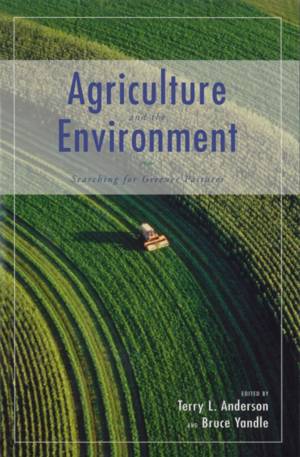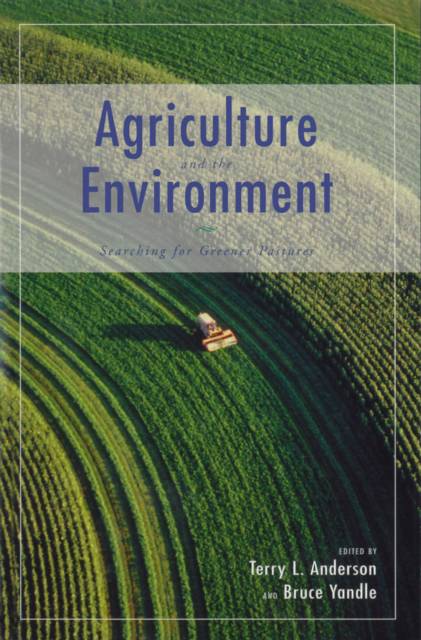
- Afhalen na 1 uur in een winkel met voorraad
- Gratis thuislevering in België vanaf € 30
- Ruim aanbod met 7 miljoen producten
- Afhalen na 1 uur in een winkel met voorraad
- Gratis thuislevering in België vanaf € 30
- Ruim aanbod met 7 miljoen producten
Zoeken
€ 25,45
+ 50 punten
Omschrijving
U.S. agriculture is the envy of the world. Although output from U.S. farms is high, there is a growing gap between what is being produced and what could be produced, partly because innovation and production are constrained by a growing maze of environmental regulations. The chapters, authored by leading experts in their fields, focus on the major environmental constraints that limit U.S. food production without necessarily improving environmental quality. Each paper documents a specific issue, discusses the regulatory response, and offers ideas for reform.
-U.S. farmlandAre we really running out of prime farmland? Or is this another example of Chicken Little?
-Sensitive habitat
How can environmentally sensitive land be preserved? Does it make sense to set aside habitat forever? How can the market process be strengthened?
-Urban sprawl and agricultural land
Can controls on agricultural land use prevent urban sprawl? Are there market alternatives to command and control?
-Chemicals and agriculture
The use of agricultural chemicals accounts for much of the high growth of output from U.S. farms. Are chemicals that contribute to agricultural productivity harmful to the environment? Have regulations made things better or worse? Can we return to natural farming? At what cost?
-Genetically engineered food products
Are genetically modified crops dangerous to human health? Do they harm the environment or do they improve it by reducing pesticide and chemical use? Will more regulations on genetic engineering actually harm the environment?
-Taxation
How do taxes affect land use? Are they an effective tool for encouraging prosperity?
-Water
What is the role for water markets in agriculture? Can they balance water use with in-stream environmental demands? Why are farmers concerned about water markets?
-Endangered species protection
How has the Endangered Species Act affected U.S. farmers and ranchers? Has it worked? How can species-protecting market incentives be introduced?
Specificaties
Betrokkenen
- Auteur(s):
- Uitgeverij:
Inhoud
- Aantal bladzijden:
- 274
- Taal:
- Engels
- Reeks:
Eigenschappen
- Productcode (EAN):
- 9780817999124
- Verschijningsdatum:
- 1/04/2001
- Uitvoering:
- Paperback
- Formaat:
- Trade paperback (VS)
- Afmetingen:
- 152 mm x 229 mm
- Gewicht:
- 285 g

Alleen bij Standaard Boekhandel
+ 50 punten op je klantenkaart van Standaard Boekhandel
Beoordelingen
We publiceren alleen reviews die voldoen aan de voorwaarden voor reviews. Bekijk onze voorwaarden voor reviews.











